ATSC 113 Weather for Sailing, Flying & Snow Sports
Optimal Ski Pistes
Learning Goal 7m: Describe what makes an optimal ski run for
recreation and racing
Learning Goal 7n: List and explain ways that mountain operators
reinforce the
snowpack hardness on a recreational and racing ski piste
Many ski resorts have hundreds to thousands of acres of skiable terrain. These include (1) groomed ski pistes, where the majority of people skiing or snowboarding recreationally spend their time, as well as where downhill racing occurs; and (2) off-piste ungroomed areas, where the terrain tends to be more extreme and more advanced skiers are found. Off-piste areas include traditional-looking runs that are left ungroomed (these are typically covered in moguls), glades (runs with spaced trees), and ungroomed alpine areas that can contain open bowls or chutes. Both ski pistes and off-piste areas require some level of preparation of the slope by the ski resort.
How are each of these areas prepared?
-
Groomed ski pistes for recreation
A ski piste is a groomed and compacted ski run (Fig. 7mn.1-7mn.2) within a ski resort. It provides the location for both recreation and downhill ski racing. You'll mostly hear ski pistes referred to as ski runs, groomed runs, or groomers. Mountain operators and recreational skiers tend to prefer ski pistes that are:
- Safe
- Smooth and even
- Durable
- Interesting in their terrain
- Visually attractive to visitors, and
- Provide a good grip.
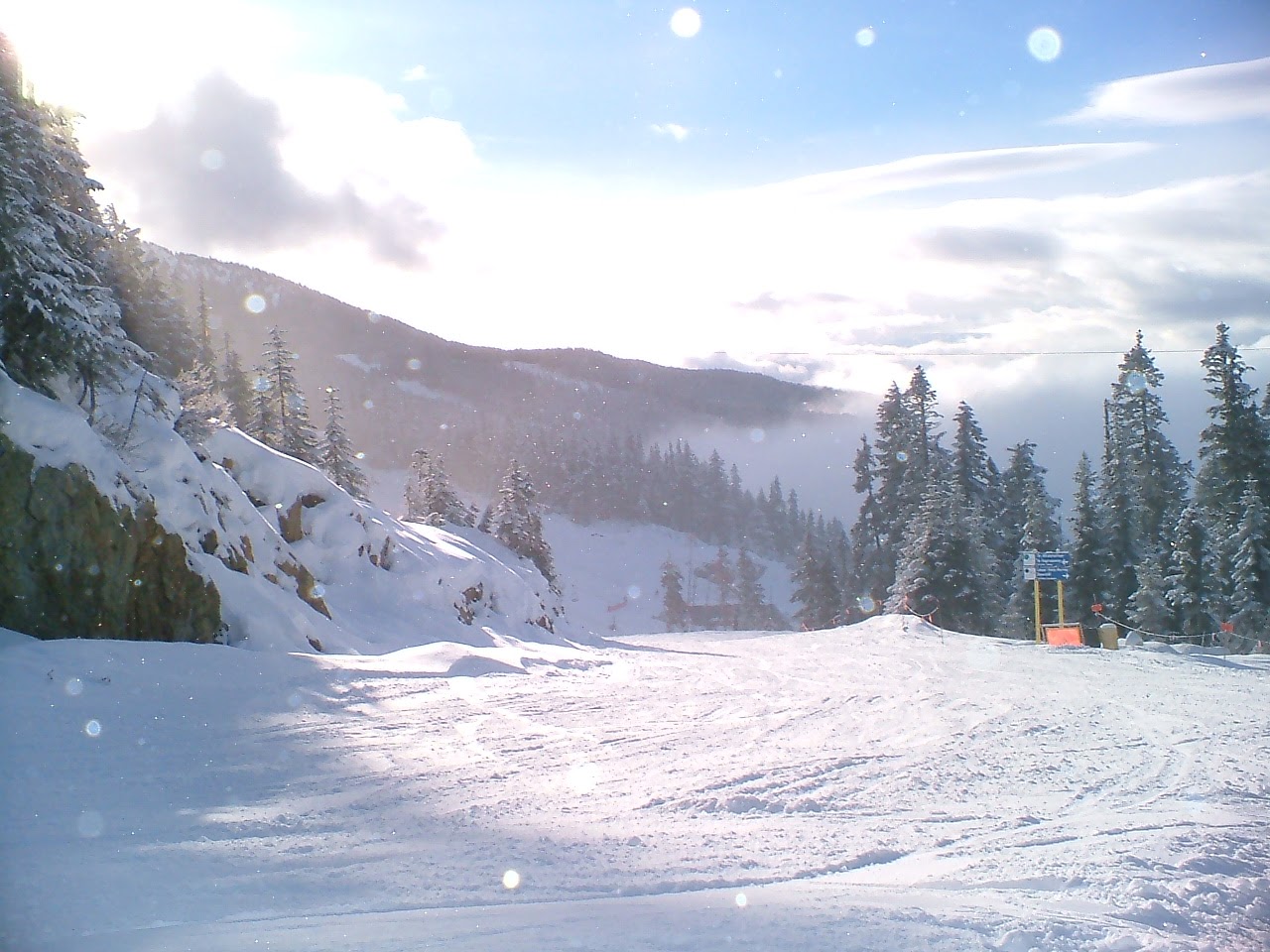
Fig. 7mn.1 - Looking down a wide, gentle, groomed ski piste, which has been prepared for recreational skiing. Photo taken on the Dave Murray downhill ski run at Whistler Mountain, BC. (Credit: Howard)
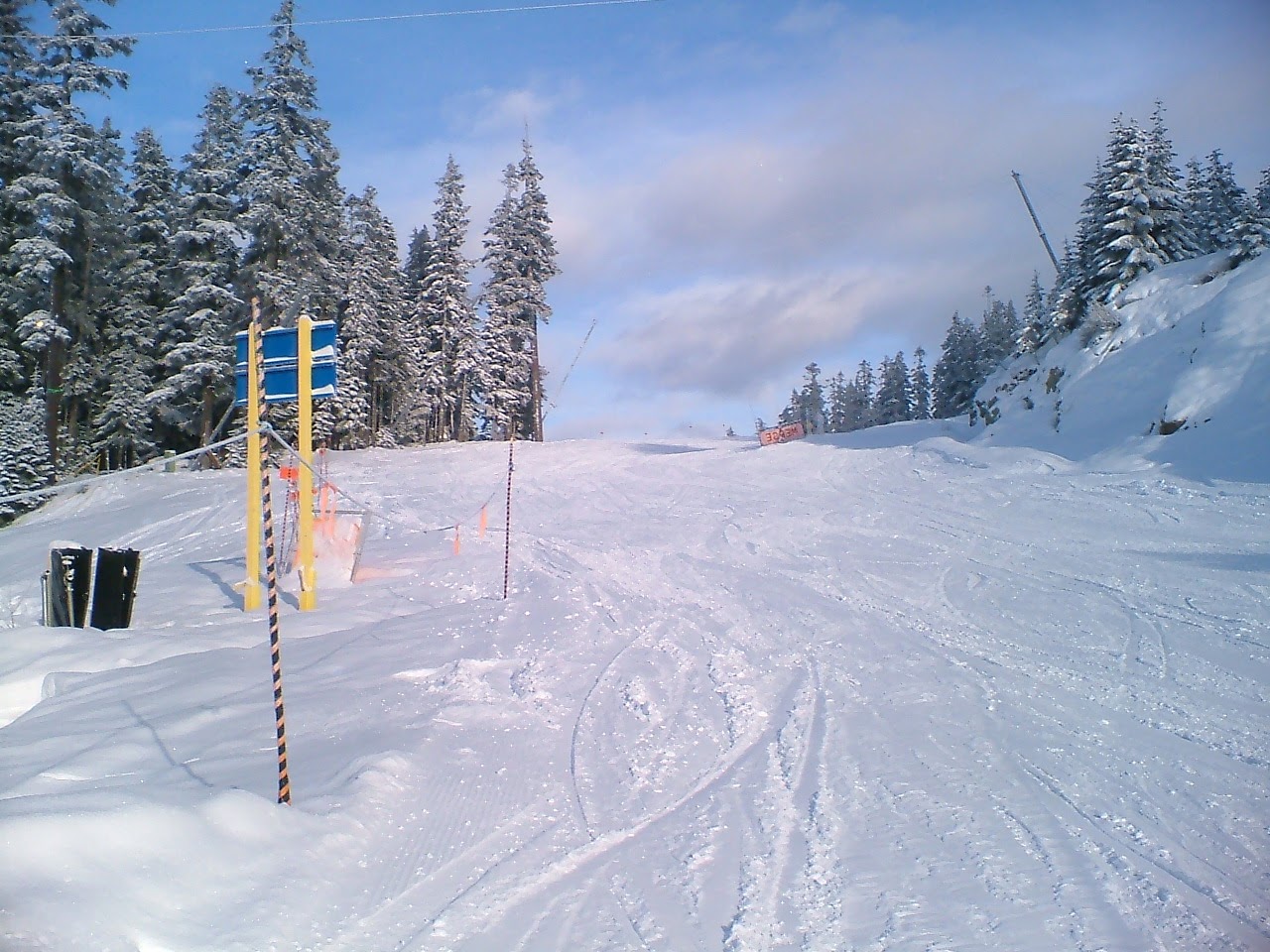
Fig. 7mn.2 - Looking upslope on the same ski run as in Fig. 7mn.1, the Dave Murray downhill at Whistler Mountain, BC. (Credit: Howard)
Grooming and compacting the snow on ski pistes is usually done with a grooming machine, nicknamed a snowcat. The snowcat has tools attached to it that churn, till, and then compact the top 10-15 cm of the snowpack as it drives slowly along. This process increases snow density and hardness.
Table 7mn.1 gives examples of different snow densities and their characteristics. You will learn about snow density and hardness of natural backcountry snowpacks in other learning goals. For ski pistes, generally speaking, the faster the user, the more dense the piste needs to be. Recreational skiers on average do not travel nearly as fast as ski racers, so it is less important for the piste to be prepared to the same high density and hardness (see section on "Downhill ski race courses" below).
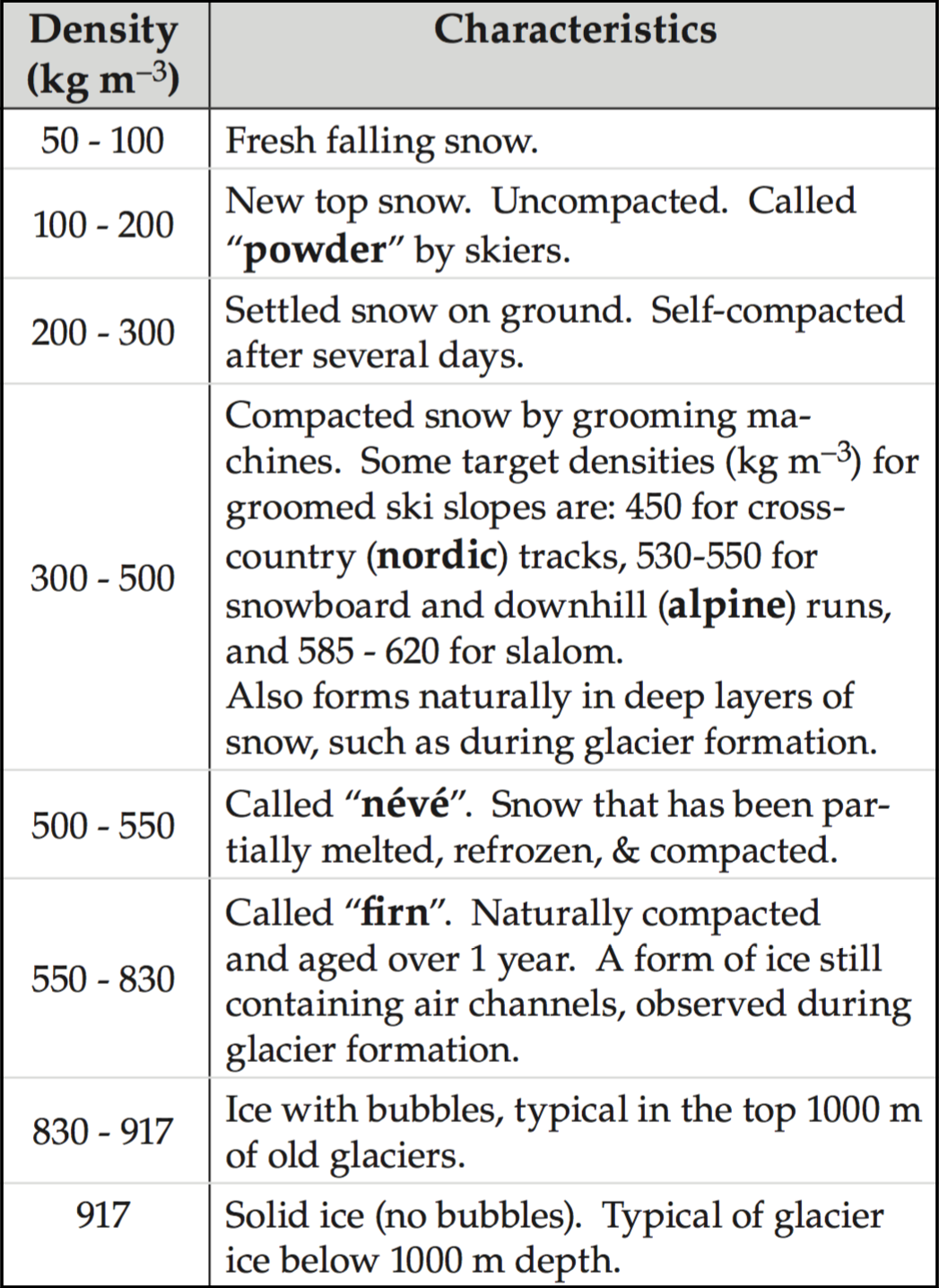
Table 7mn.1 - Typical snow densities ranging from freshly fallen snow (lowest) to solid ice (highest). (Credit: Stull)
Grooming in ski resorts usually occurs on a daily basis in the winter. This is necessary because the snow surface gets cut up by recreational skiers and transformed by weather and natural processes, e.g. new snow/melting. In high traffic areas the piste may become "scraped off" by the end of a ski day, where much of the churned surface snow gets pushed to the sides or into small piles, with hard or icy conditions in between. This can be hazardous to tired skiers making their way to the base of the ski area on these high traffic runs. In these conditions, either try to control / reduce your speed, or try to stay near the edge of the piste where the snow is not so "scraped off" as near the center of the piste.
The grooming machines spread the snow evenly across the piste, and restore the surface to its durable and safe condition for the next day.In order to keep costs down, ski resorts like to utilize natural processes to help with the hardening of the snow surface. This means it is necessary to consider atmospheric and snow conditions at the time of grooming and preparation, and in the 12 hours or so following.
- It is usually best if pistes are maintained immediately following closing, giving them maximum time to harden before reopening the next day. The exception is when there is snowfall in the overnight forecast.
- For reasons we won't get into, the hardening process generally happens fastest if the snow temperature is as close to 0°C as possible.
- Preparing a ski piste when the snow is very low density, i.e. freshly fallen snow (see Table 7mn.1), has little effect. Until the snow has become more dense by settling and other natural processes not discussed here, the maintenance should be delayed.
- For very low snow temperatures, the equipment can pass over the snow surface very slowly in order to warm up the snow as it goes.
- To avoid risk of avalanches on steeper ski pistes due to weak layers, the snow should be groomed after each ~20 cm of snowfall.
Here is a table summarizing the above information...
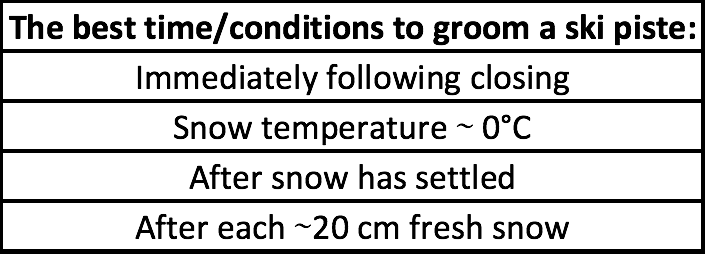
Table. 7mn.2 - Summary of the best time and conditions for optimally grooming a ski piste in resort. (Credit: Howard)
Downhill ski race courses
In downhill ski racing, skiers accelerating out of very fast turns apply large forces to the snow surface. If the snow surface is not hard enough, the skis will cut into the ski piste, not allowing the racers to turn as fast as they might, or even worse, will cause the racer to slide out sideways because the snow moves from beneath them. This is very dangerous since they travel at high speeds in excess of 100 km/h, sometimes as fast as 150 km/h!
Ski racing events are frequently cancelled/delayed/postponed because of weather and snow conditions - although the organizers usually try and do everything they can to prevent this.
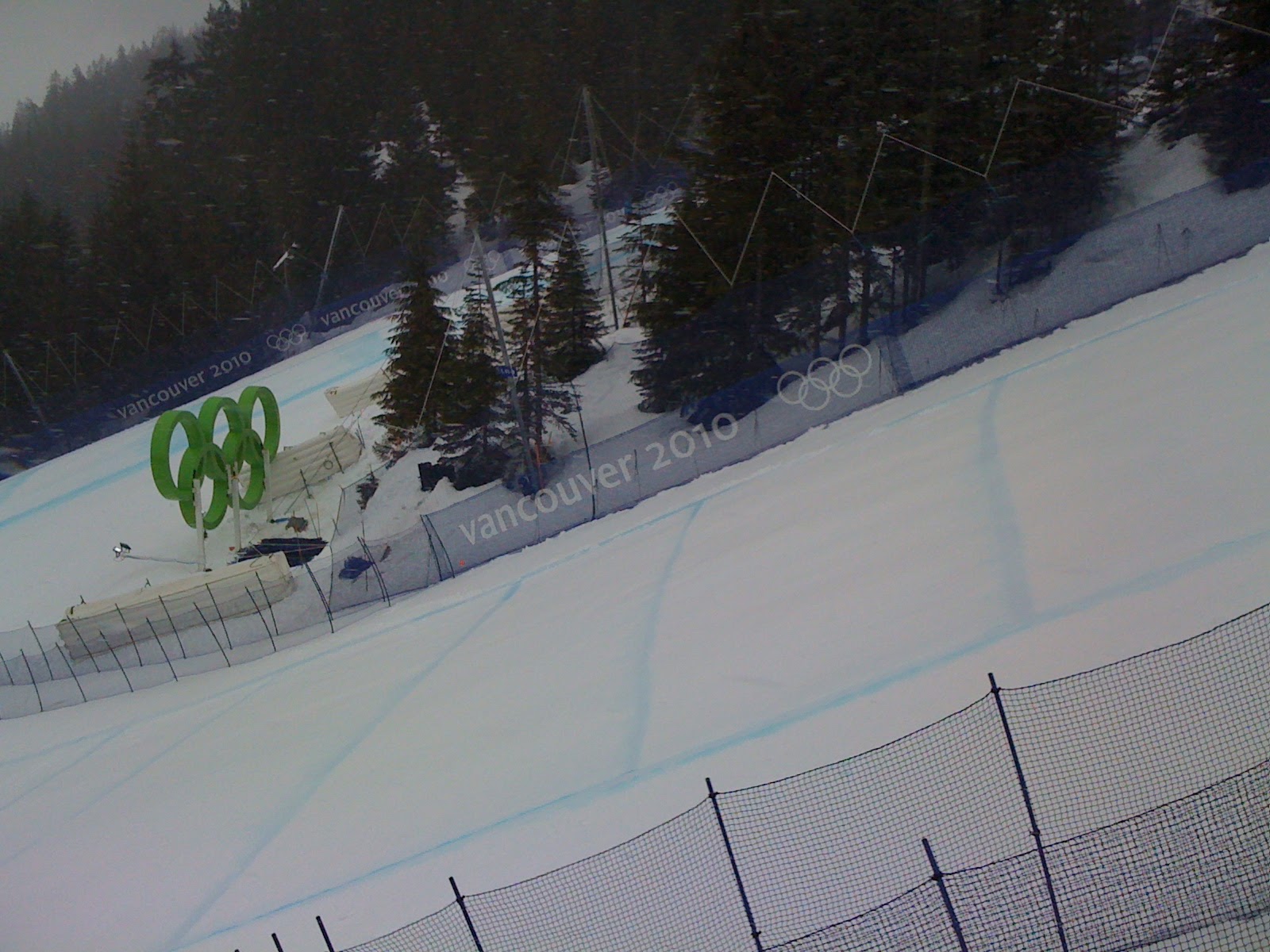
Fig. 7mn.3 - A steep, compacted ski run, which has been prepared for downhill ski racing as part of the 2010 Winter Olympics. Photo taken near the Dave Murray downhill ski run at Whistler Mountain, BC. (Credit: Howard)
Preparing a ski race course begins with preparing it as you would for recreation, by grooming at the optimal time. Following this, extra steps are taken to first harden the snow, and then to clear any snow that falls or becomes dishevelled on top of the prepared surface. Options for hardening the ski piste for racing are as follows:
- Using grooming machines, skis, or feet, to compact the snow surface In addition to using snowcats to increase snow hardness, snow can be stomped on with skis or feet wearing hard boots. This is sometimes more effective than a snowcat, but does not give uniform results across the piste.
- Using man-made snow Man-made snow from a snow gun is much higher density than freshly-fallen natural snow. It is on average approximately 400 kg/m3, since the snow crystals are much smaller and rounded so they pack more closely together. However, this requires a lot of energy, time, water, and expense to produce.
- Water injection Water is injected into the snowpack using a long hose with evenly-spaced nozzles along it, 10 cm or so apart. The water in the snowpack freezes, increasing the bonds between snow crystals and the overall density and hardness. Snow density can be increased by 50-100 kg/m3 using this method. It works best when done overnight during clear skies at cold temperatures.
- Using chemicals Mixing salt or fertilizer with snow (that has liquid water content) will cause the melting point of the liquid water solution to drop. Snow crystals in contact with the chemical-water solution will likely melt. The melting process uses energy from the surrounding snow, meaning the overall snow temperature decreases. As more melting occurs, not only does the temperature decrease, but the salt-water solution becomes weaker resulting in a higher melting point, so the water freezes again sooner.
The exact solution proportions must be right for optimal cooling. It can be effective over short time periods, so it can be done very shortly before a race. However, some places prohibit chemical application for environmental and health reasons.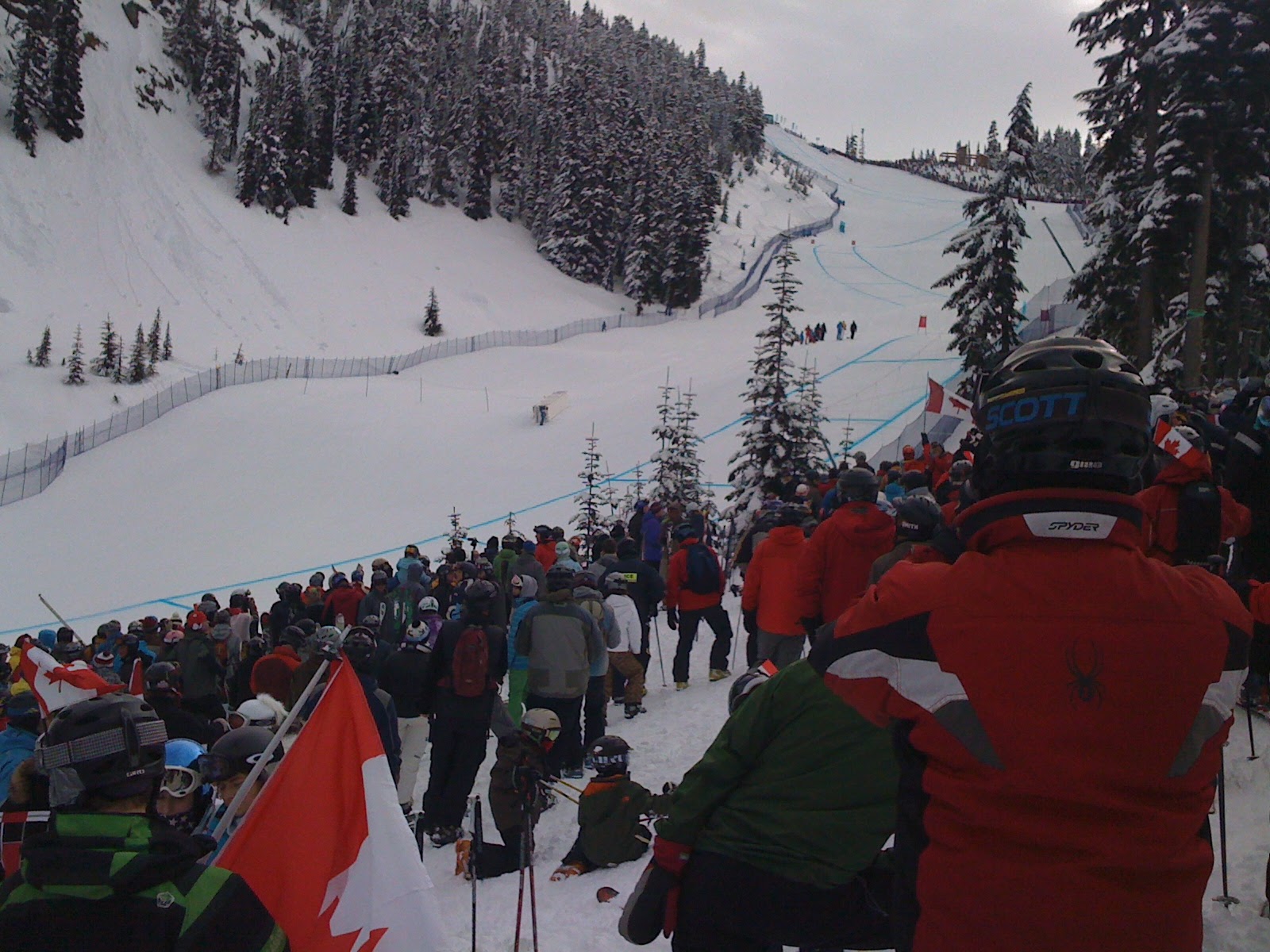
Fig. 7mn.4 - Another example of a steep, compacted ski run, which has been prepared for downhill ski racing for the 2010 Winter Olympics. Photo taken near the top of the Dave Murray downhill ski run at Whistler Mountain, BC. (Credit: Howard)
See the Extra Info box below for a very in-depth and comprehensive slide show on the preparation of pistes. - Off-piste skiing
The preparation required for off-piste ski areas is usually much less frequent, but it can be just as important in terms of safety. Ungroomed trails that have moguls on them may be largely untouched by the snowcats, though the resort may decide to groom the slope to clear the moguls if they become too large or icy. Gladed ski runs are never touched by grooming equipment. The ungroomed alpine terrain may include difficult and extreme terrain just as you would find in the backcountry, with bowls, couloirs, and cliffs (Fig. 7mn.5). Avalanches could occur in these areas within the resort, but ski resorts take action to virtually eliminate this hazard.
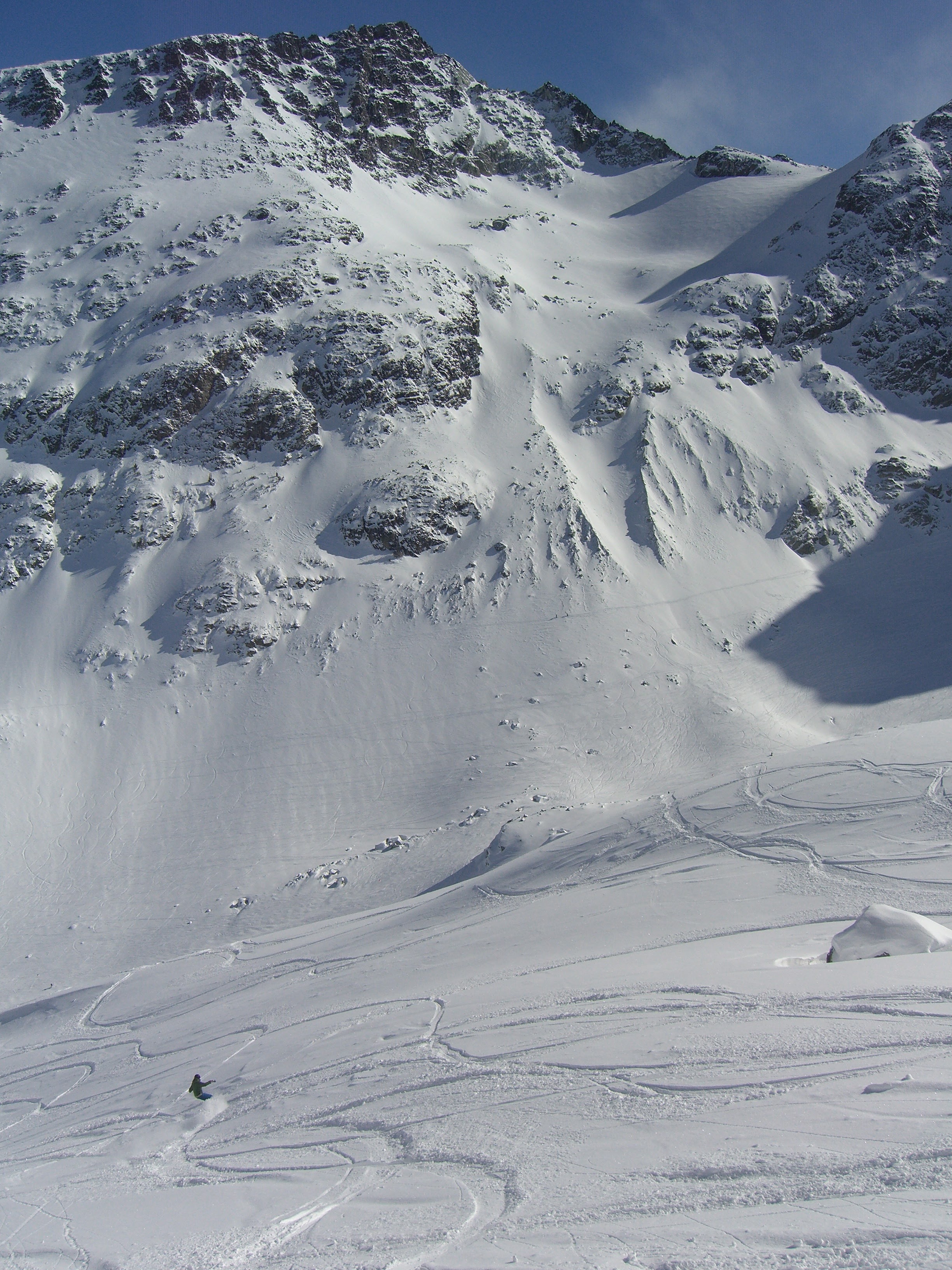
Fig 7mn.5 - A natural off-piste ski run. This is within the ski resort boundary and is patrolled, but is not groomed or compacted. Photo taken in Sapphire Bowl, Blackcomb Mountain, BC. (Credit: Howard)
If you are ever staying at a resort close to a ski mountain, you may hear distant but loud bangs very early in the morning. While this can be alarming if you don't know what they are, if you like skiing in powder, it is actually often the sign of a good ski day to come! The sound is the ski patrol performing avalanche control work. They detonate explosives on the mountain in an effort to trigger potential avalanches before the skiers arrive on the mountain. If an avalanche is triggered, the unstable snow is cleared from the slope, making it safe. If an avalanche is not triggered by these powerful explosions, it's virtually guaranteed that the snow is stable enough that a skier will not trigger an avalanche. This avalanche control work allows the ski resort to open the more extreme terrain sooner after new snowfall.
In-bounds avalanches can occur, but are very very rare. One estimate puts your odds of being buried in an in-bounds avalanche at 1 in 50 million. However, a recent increase in in-bounds avalanche incidents have prompted some skiers to start wearing their avalanche beacons in bounds.
Avalanche control doesn't happen every day, but mainly following heavy snowfall or multiple smaller snowfalls. Hence it being an exciting sound if you like skiing in deep powder! In order to estimate the avalanche danger, the ski patrol monitors and assesses the snowpack layers from different snowfalls/storms, and their densities and hardness, just as a savvy backcountry skier would do (see Learning Goal 7f). Avalanche control work is also done in the backcountry if an avalanche from the area could potentially run into the ski resort or across highways. Check out this YouTube video of avalanche control work carried out from a helicopter in the Steven's Pass backcountry, Washington, USA.
Extra Info for Experts; Not Needed for this Course.
- Slide show on the preparation of alpine ski pistes, produced by the Swiss Federal Institute for Snow and Avalanche Research: http://player.slideplayer.com/1/264900/#
Key words: groomed ski pistes, off-piste, avalanche control
Figure Credits: Howard: Rosie Howard, West: Greg West, Stull: Roland Stull